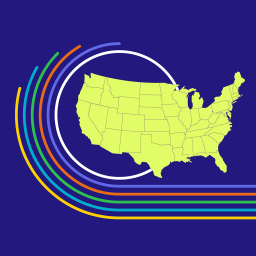Anti-abortion groups and policymakers are attempting to weaponize environmental laws to restrict medication abortion. Our experts lay out why there is no evidence to support these claims.
Abortion in the United States
Featured
Abortion Research & Policy Tools

National and state-level data on abortion provision, medication abortion use and interstate travel for abortion.
State-specific abortion bans, restrictions and protections.
Fact sheets on abortion laws by state and other key sexual and reproductive health policies.
Updates on major legislative developments related to sexual and reproductive health in each state.
Analyses of state-level reproductive health policy trends, including new abortion restrictions and protections enacted.
Key Abortion Issues
We produce data on medication abortion at the state and national levels, as well as tracking and analysis of state-level restrictions and current threats to medication abortion access.
Our experts track major federal actions that affect abortion rights and access in the United States.
Our resources explore the policy landscape for shield law providers and escalating threats to this critical source of abortion care.
Our experts track state-level abortion policy trends and developments, and release comprehensive analyses at least twice a year.
Our experts are tracking major court cases that could impact reproductive health in the United States.
Our analyses explore the disproportionate impact of abortion bans and restrictions on young people.
Our experts are pushing back against shoddy science that features prominently in attempts to undermine abortion access.
Our research and policy work examines how overturning Roe v. Wade has impacted US abortion access.
We quantify the extent to which people are traveling across state lines for abortion care and analyze the related legal, political and health care ramifications.
Our resources explore disparities in access to care and how lack of access affects marginalized groups.
Our research documents abortion incidence and barriers to care among:
Our resources explore how the abortion access landscape has shifted since Roe was overturned and the state policies that impact abortion providers.
Our resources explore how insurance coverage shapes access to abortion care.
Our experts analyze the role of abortion in the 2024 election, at both the national and state levels.
Shaping the Conversation
Framing US Abortion Access: Roe and Dobbs
Explore how landmark Supreme Court decisions have shaped abortion access in the United States, alongside key abortion statistics, trends and demographic data from the Guttmacher Institute.
Roe v. Wade was a landmark 1973 US Supreme Court decision that established the federal constitutional right to abortion under the 14th Amendment, which ensures the right to privacy. Though Roe established the right to abortion—a precedent that stood for nearly 50 years—it fell short of guaranteeing universal abortion access in the United States.
In June 2022, the US Supreme Court decision in Dobbs v. Jackson Women's Health Organization overturned Roe v. Wade and ended the federal constitutional right to abortion. Dobbs cleared the way for states to pass total abortion bans and bans on abortion beginning early in gestation, accelerating the loss of abortion access in many states.
Examine key data points related to abortion in the United States, drawing on the Guttmacher Institute’s long-standing efforts to document abortion numbers and rates, characteristics of people having abortions and related indicators.
Explore Guttmacher's US Abortion Resources
The Guttmacher Institute conducts timely research and policy analysis on abortion in the United States, including tracking legislation at the state and federal level. Explore all our resources on abortion in the United States, including peer-reviewed research, policy analyses, and tracking of major legislative updates at the state and federal level.
Sign up to receive our research and policy updates






